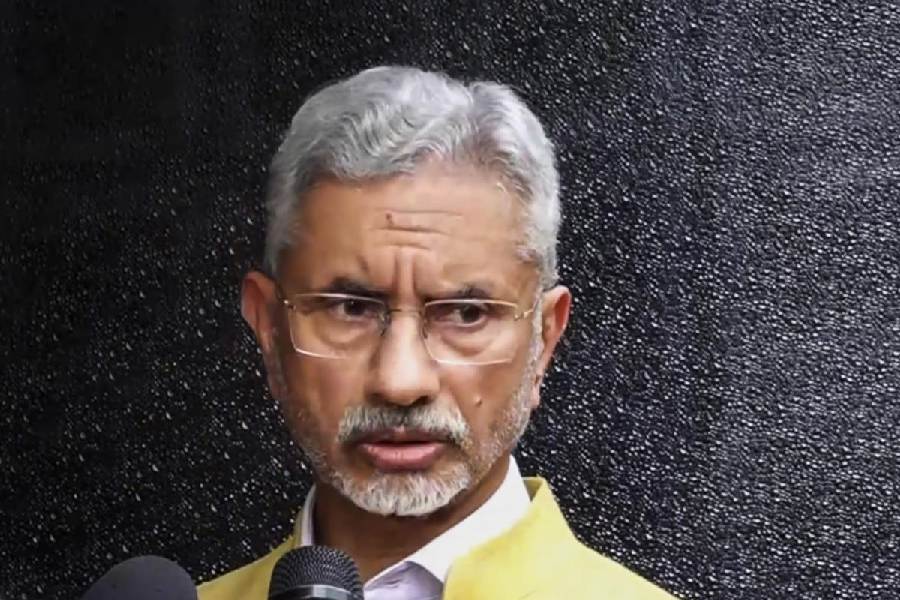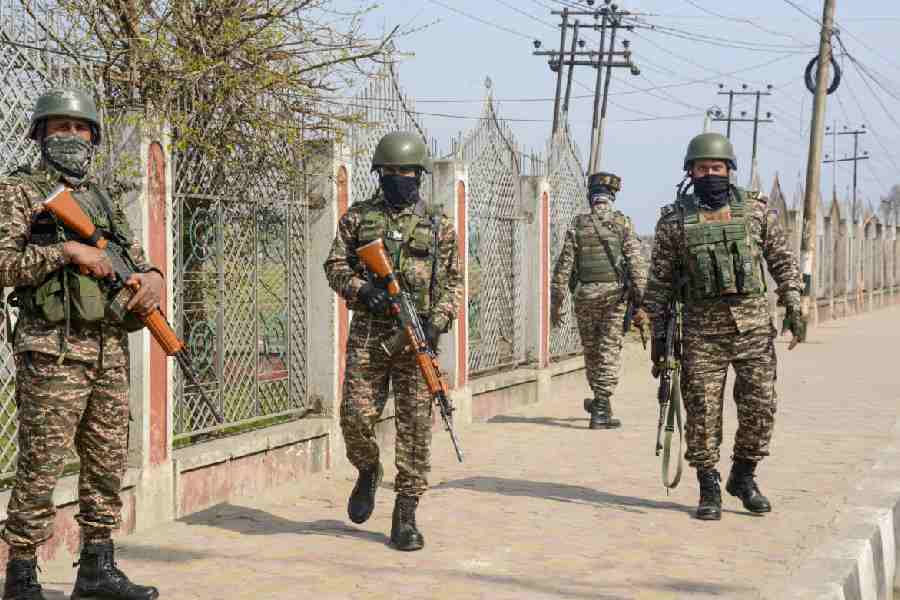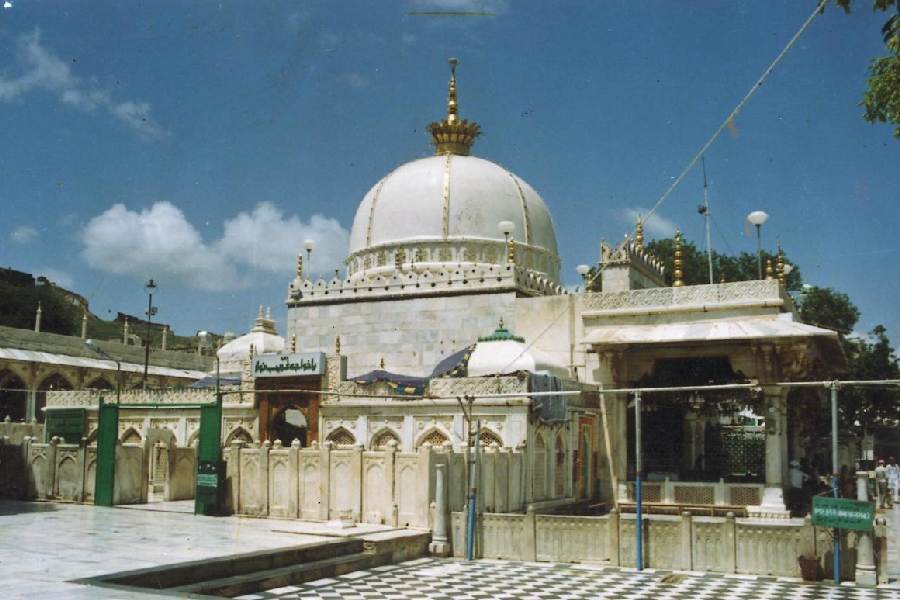 |
 |
 |
 |
| (From top) Once the tennis court and reception room of Paikpara Rajbati, now a pile of bricks; women who live in the palace; lattice work and stucco on veranda; graveyard of police vehicles. Pictures by Sanjoy Chattopadhyaya |
Amputees, they say, can feel pain in a limb that does not exist any longer. In somewhat the same way, even after a house has been demolished, the mind?s eye can conjure up its form in the void even if one had never set one?s eye on it.
What used to be the reception rooms, offices and tennis court of Paikpara Rajbati on BT Road is reduced to piles of bricks stacked in an empty yard. Labourers pulverise the remains of giant pillars. The shapes of columns are traced against walls. After all the debris is cleared, a highrise will probably be erected here.
The empty yard is surrounded by the abandoned mansion, large sections of it in the embrace of an abundance of parasitical growth. In the mid-1960?s, when the household had moved to Lansdowne Road and the Naxalite movement was gaining ground in north Calcutta, the Rajbati had been leased to the police. It became their barracks.
Over the years, it turned into an ungainly, sooty heap, an ideal home for spooks. The main portal is adjacent to the shattered garage of state buses. The pavements and the peripheries of the mansion are appropriated by squatters.
But the Rajbati is still easily identifiable. Next to it is the Great Trigonometrical Survey tower, whitewashed of late, with the giant letters PWD emblazoned on it in black. The second tower on the same road is at Sukhchar near Sodepur. Local people used to call it ?Lalababur Girja? or Lalababu?s church, the babu being one of the Paikpara zamindars, who gained mythopoeic status in Bengal.
The high arched portal of iron leads to a huge open space that is a graveyard of black marias and other police vehicles. Knots of poor men and women gather there to while away their time.
In such a poverty-stricken area, arches, verandas and lattices come as a surprise.
The legend: Home Guard Office, North District, is visible inside. An old man lies on a cot in the filthy corridor. Crouching on the floor is a man, obviously mad, shackled to a pillar. The rooms inside are occupied. The courtyard is piled with garbage. About 25 to 30 families live there.
The staircase is marble, art deco style, and caked with dirt of decades. The floor it leads to is deserted. But a light burns inside a room on the floor across the courtyard.
Scientist Bikash Sinha, a scion of the family, says he was born in that house in 1945. ?The Rajbati had 350 rooms. Even when I was young, 250 of them were in use. It was like a township with about 100 to 120 people inside. Many poor people, distant relations and widows lived there,? he says.
But it was too large and unwieldy a place which was becoming unmanageable. Sinha went abroad for higher studies in 1964.
The next year, his father decided to leave the palace. After the abolition of zamindari, the family income had shrunk. It was difficult to maintain the white elephant.
The bloodbath of the Naxalite movement followed and the family handed over the Rajbati to the police. Its decline began.
The Paikpara zamindars are originally from Kandi, in Murshidabad, which is still their ancestral seat.
The family can be traced back to 250 years, as far back as Ganga Gobind Singh. The family arrived from the north-east frontier and settled in Kandi. The present generation has three branches.
Paikpara Rajbati was built around 1836, but as Sinha confirmed, many additions were made later. It occupied a little more than 400 bighas. The house had stables and cowsheds and the garage boasted flashy automobiles.
Many luminaries of the 19th century visited the Rajbati and later, too, great artistes and musicians were welcomed here. They used to be received in Sajano Ghar, a formal reception room. Matchboxes will come up there soon.










